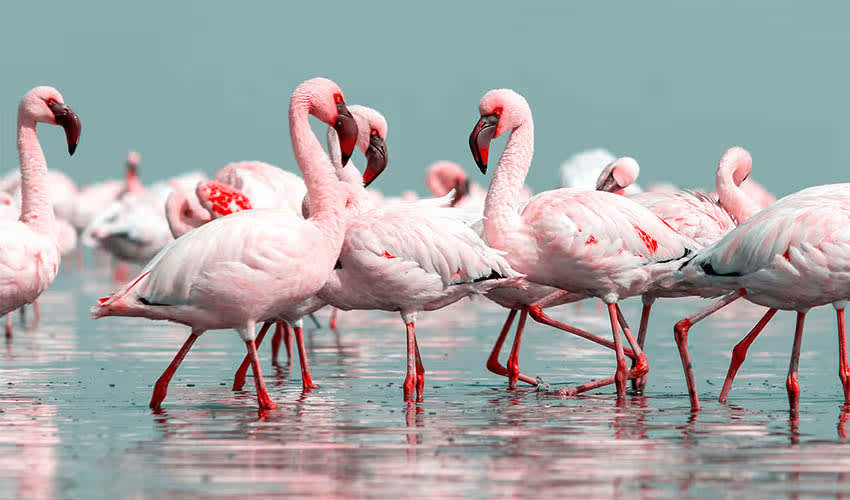Phoenicopteridae – Flamingos
Flamingos get their unique pink color from the carotenoids in the algae they eat
Renowned for comprising all known species of flamingos, some of the most instantly recognizable and universally admired birds due to their striking pink plumage and unusual physical characteristics. Flamingos are found in the Americas, Africa, Europe, and Asia, living in a variety of water bodies from lagoons to alkaline lakes, often in regions where few other species can thrive.
Flamingos are wading birds that vary in size. The Greater flamingo, the largest species, can stand up to 1.4 meters (4.7 feet) tall, while the Lesser flamingo, the smallest, reaches just over 70 centimeters (2.5 feet). These heights allow them to wade deeper into the water to access their food sources.
One of the most distinctive behaviors of flamingos is their habit of standing on one leg. While the exact reason for this behavior is not definitively known, several theories suggest it may help conserve body heat, as tucking one leg close to the body could reduce heat loss in cold water. Another theory suggests that it may help reduce muscle fatigue, allowing the birds to rest half of their standing muscles.
Flamingos are filter feeders with highly specialized bills designed to sift through mud and water to extract their diet, primarily consisting of small organisms such as shrimp, algae, and mollusks. The pink coloration of their feathers comes from carotenoid pigments found in their food; the more pigments they consume, the more vibrant their color.
Flamingos are also known for their social behavior. They live in large colonies that can number in the thousands, which offers protection against predators and helps individuals locate food by following the feeding paths of others.
While flamingos may appear serene, they can be quite territorial and aggressive when it comes to defending their nesting sites. This protective behavior ensures the survival of their young in crowded colonies.
Genera in this family
These birds derive their beautiful pinkish color from the food they eat
This bird holds a Guinness book of world records to its name: largest flamingo colony



